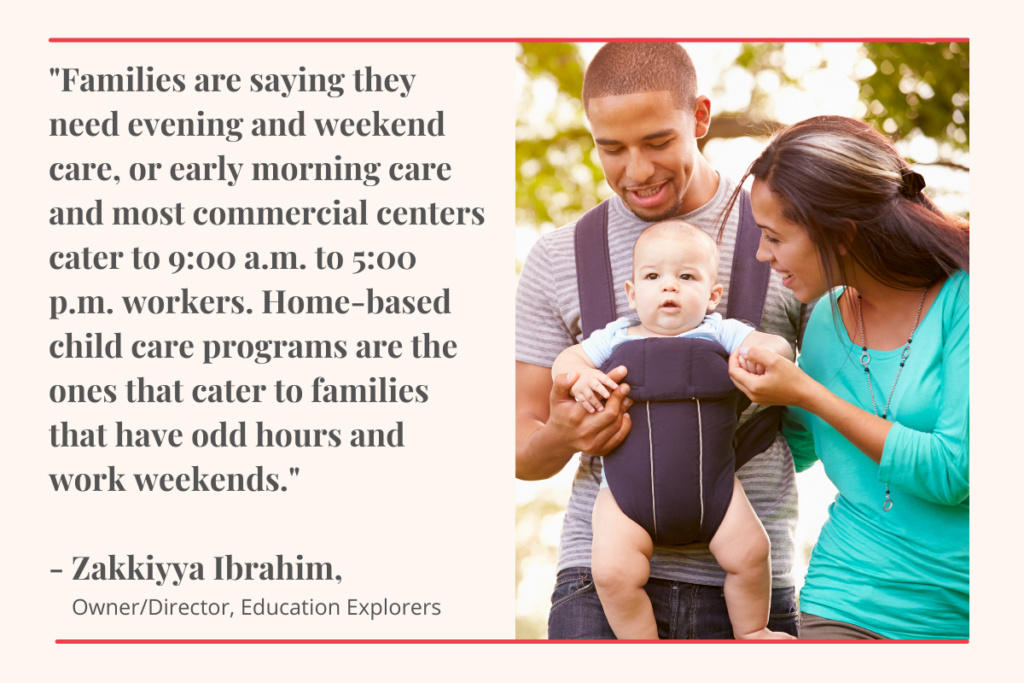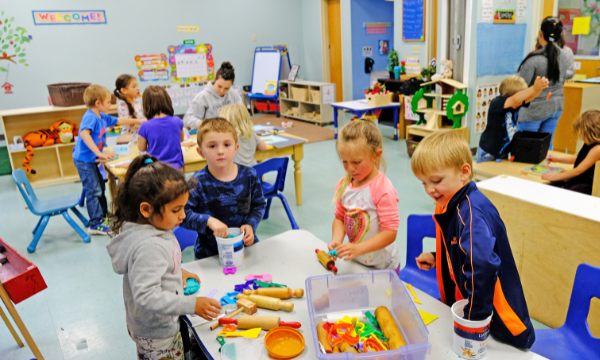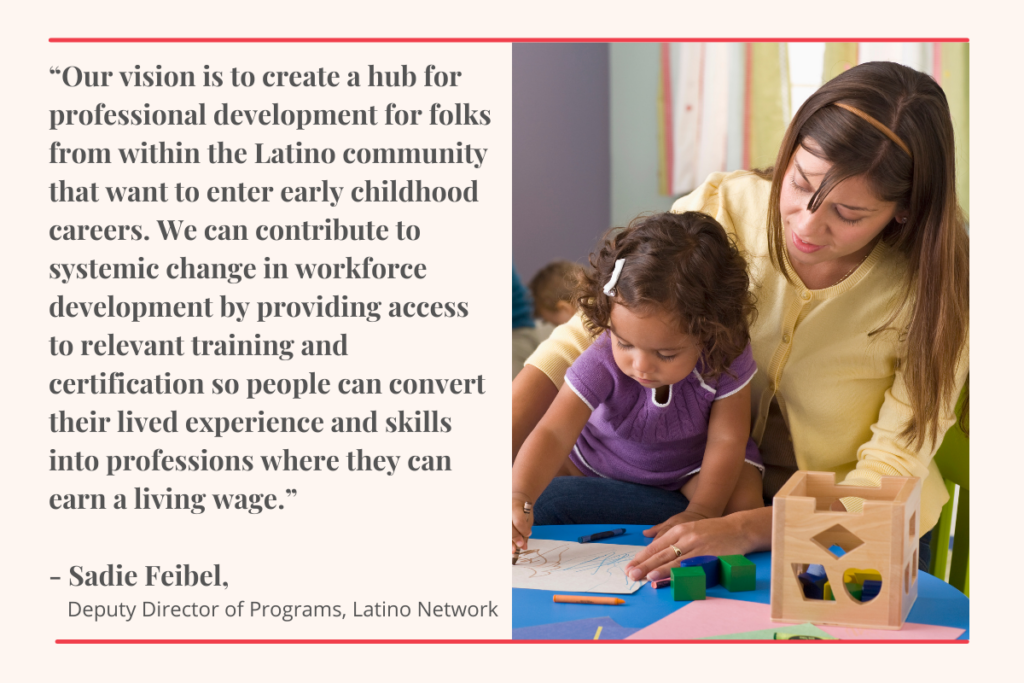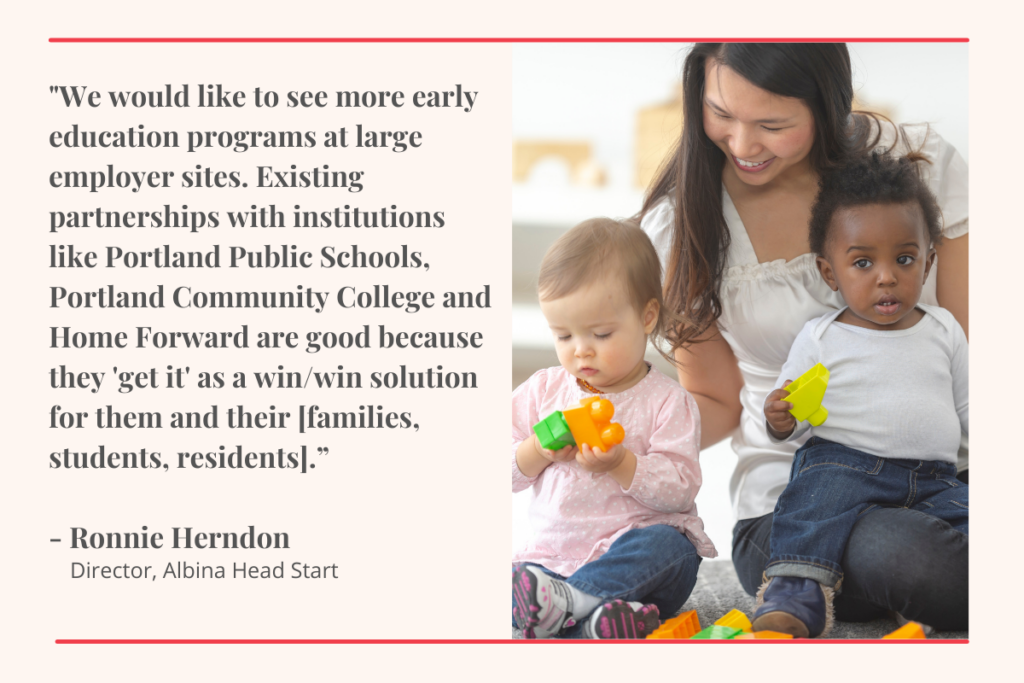The Business Case
Lauren Sigman, early learning coordinator for the Lincoln County School District said, “We need businesses, local governments, and the state to collaborate to increase capacity with the recognition that child care is necessary infrastructure for employees to go to work.” Maria Weer, executive director at Building Healthy Families in Enterprise, Oregon points out that this is now contributing to staff shortages at all types of businesses. She said that “the business community is stating clearly that they can’t recruit staff because people don’t have child care. The hospital was having so much trouble recruiting staff without providing child care that they bought a modular home and put it in their parking lot to create that.”
In Oregon’s mixed delivery system, all types of child care and preschool programs offer important and distinct qualities that help families and the economy thrive.

Home-based Providers
Small scale child care and preschools located in residences fill an important niche in the delivery system. Zakkiyya Ibrahim, director at Education Explorers in Washington County said, “a lot of families are saying they need evening and weekend care, or early morning care and most commercial centers cater to 9:00 a.m. to 5:00 p.m. workers. Home-based child care programs are the ones that cater to families that have odd hours and work weekends.” This is an equity issue. For parents working non-traditional work hours, racist and structural barriers to employment, education, and access to services make child care access even more difficult. In Oregon, nearly one-third (31 percent) of young children in working families have parents working non-traditional hours.








